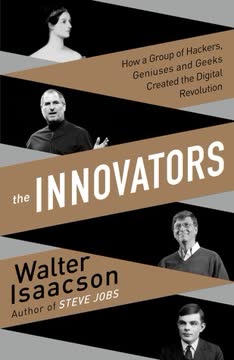Key Takeaways
1. Journalism evolves: From print to digital, adapting to new challenges
"Newspapers now have more readers than ever. Their content, as well as that of newsmagazines and other producers of traditional journalism, is more popular than ever—even (in fact, especially) among young people."
Digital transformation. The journalism industry faces a paradox: readership is at an all-time high, yet revenue is declining. This shift is primarily due to the transition from print to digital platforms, where content is often freely accessible. The challenge lies in monetizing digital content while maintaining journalistic integrity and quality.
Adapting business models. Traditional revenue sources for newspapers and magazines—newsstand sales, subscriptions, and advertising—are being disrupted. The industry is exploring new models, including:
- Digital subscriptions
- Micropayments for individual articles
- Bundling digital access with print subscriptions
- Diversifying revenue streams through events, e-commerce, and branded content
Preserving quality journalism. Despite the financial challenges, the core mission of journalism remains unchanged: to inform, investigate, and hold power accountable. The industry must find ways to sustain high-quality reporting and analysis in the digital age, potentially through a mix of traditional and innovative funding models.
2. The power of narrative: Telling history through people's stories
"Let's brag for a moment. To name just a few random things we accomplished in a hundred years: We split the atom, invented jazz and rock, launched airplanes and landed on the moon, concocted a general theory of relativity, devised the transistor and figured out how to etch millions of them on tiny microchips, discovered penicillin and the structure of DNA, fought down fascism and communism, bombed Guernica and painted the bombing of Guernica, developed cinema and television, built highways, and wired the world."
Human-centered storytelling. History becomes more engaging and relatable when told through the lens of individual experiences. This approach brings abstract concepts and events to life, making them more accessible to readers.
Capturing the essence of an era. By focusing on key figures and their stories, writers can effectively convey the spirit, challenges, and achievements of a particular time period. This method allows readers to:
- Connect emotionally with historical events
- Understand complex ideas through personal narratives
- Appreciate the human element behind significant developments
Balanced perspective. While celebrating achievements, it's crucial to acknowledge the darker aspects of history, such as war and oppression. This balanced approach provides a more comprehensive understanding of the past and its implications for the present and future.
3. Science and technology shape the 20th century more than politics
"The twentieth century will be most remembered, like the seventeenth, for its earthshaking advances in science and technology."
Technological revolution. The 20th century witnessed unprecedented scientific and technological progress, fundamentally altering human society. Key advancements include:
- Atomic energy and nuclear weapons
- Space exploration and moon landings
- Computer technology and the digital revolution
- Medical breakthroughs like penicillin and DNA structure
Impact on daily life. These scientific developments transformed every aspect of human existence, from communication and transportation to healthcare and entertainment. The rapid pace of change created new industries, reshaped economies, and altered social structures.
Scientific minds as icons. Figures like Albert Einstein, Marie Curie, and Alan Turing became cultural icons, symbolizing human ingenuity and the power of scientific inquiry. Their work not only advanced human knowledge but also influenced philosophy, ethics, and global politics.
4. Einstein: The embodiment of scientific genius and moral conscience
"Einstein taught the greatest humility of all: that we are but a speck in an unfathomably large universe. The more we gain insight into its mysterious forces, cosmic and atomic, the more reason we have to be humble."
Scientific revolutionary. Einstein's contributions to physics, particularly his theory of relativity, fundamentally altered our understanding of space, time, and the universe. His work laid the foundation for numerous technological advancements and continues to influence scientific thought today.
Moral philosopher. Beyond his scientific achievements, Einstein emerged as a voice of conscience in the 20th century. He advocated for:
- Peace and nuclear disarmament
- Civil rights and social justice
- The responsible use of scientific knowledge
Cultural icon. Einstein's image as a disheveled genius with wild hair became synonymous with brilliance and creativity. His ability to explain complex concepts in accessible terms made him a beloved public figure and helped popularize science among the general public.
5. Leadership lessons from historical figures: FDR, Churchill, and Gandhi
"Franklin Roosevelt stands out among the century's political leaders. With his first-class temperament, wily manipulations, and passion for experimentation, he's the jaunty face of democratic values."
Adaptability and resilience. Franklin D. Roosevelt's leadership during the Great Depression and World War II demonstrated the importance of flexibility and perseverance in the face of unprecedented challenges. His willingness to experiment with new policies and adapt to changing circumstances was crucial to his success.
Moral courage. Winston Churchill's unwavering stance against Nazi Germany, even when Britain stood alone, exemplifies the power of moral conviction in leadership. His ability to inspire and rally a nation through oratory and determination proved crucial in the darkest hours of World War II.
Non-violent resistance. Mahatma Gandhi's philosophy of non-violent civil disobedience revolutionized political activism and inspired movements for civil rights and independence worldwide. His approach demonstrated that:
- Moral force can overcome physical might
- Peaceful resistance can effect significant social and political change
- Personal integrity and sacrifice can inspire mass movements
6. The digital revolution: Transforming society and challenging traditional media
"The digital revolution that burns so brightly today is likely to pale in comparison to the biotechnology revolution that is just beginning."
Paradigm shift. The rise of digital technology has fundamentally altered how we communicate, work, and access information. Key developments include:
- The Internet and World Wide Web
- Mobile devices and smartphones
- Social media platforms
- E-commerce and digital marketplaces
Disruption of traditional industries. The digital revolution has upended numerous sectors, particularly media and journalism. Traditional business models are being challenged, forcing adaptation and innovation.
Future implications. As technology continues to advance, we can expect further disruptions and opportunities:
- Artificial intelligence and machine learning
- Virtual and augmented reality
- Internet of Things (IoT)
- Biotechnology and genetic engineering
The pace of change presents both exciting possibilities and ethical challenges that society must grapple with.
7. Balancing idealism and realism in foreign policy and statecraft
"America is unique in that it is equally motivated by idealism. Whether it be the fight against fascism or communism, or even misconceived interventions like Vietnam, America's mission is to further not only its interests but also its values."
Pragmatic idealism. Effective foreign policy often requires a delicate balance between pursuing idealistic goals and addressing practical realities. This approach involves:
- Promoting democratic values and human rights
- Protecting national interests and security
- Engaging in diplomacy and coalition-building
- Recognizing the limits of power and influence
Historical examples. Various leaders have grappled with this balance:
- FDR's New Deal and World War II strategy
- Kissinger's realpolitik approach to diplomacy
- Reagan's blend of ideological rhetoric and pragmatic negotiations
Evolving challenges. As the global landscape changes, policymakers must continually reassess how to balance ideals with practical considerations in areas such as:
- Climate change and environmental policy
- International trade and economic cooperation
- Counterterrorism and cybersecurity
- Humanitarian interventions and nation-building
8. The art of biography: Capturing the essence of influential figures
"All biography is autobiography," Emerson says, and I suspect I have projected some of my own sentiments on the subjects I profile."
Empathy and objectivity. Writing a compelling biography requires balancing empathy for the subject with objective analysis of their actions and impact. This involves:
- Thorough research and fact-checking
- Contextualizing the subject's life within their historical period
- Exploring both strengths and flaws to create a nuanced portrait
Narrative techniques. Effective biographies use storytelling methods to engage readers:
- Vivid anecdotes and personal details
- Analysis of key decisions and turning points
- Exploration of relationships and influences
- Connecting the subject's life to broader historical trends
Self-reflection. Biographers must be aware of their own biases and perspectives, recognizing how these might influence their portrayal of the subject. This self-awareness can lead to more honest and insightful writing.
9. Preserving journalism in the digital age: Exploring new business models
"We need something like digital coins or an E-ZPass digital wallet—a one-click system that will permit impulse purchases of a newspaper, magazine, article, blog, application, or video for a nickel, dime, or whatever the creator chooses to charge."
Innovative payment systems. To sustain quality journalism in the digital era, new revenue models are essential. Potential solutions include:
- Micropayments for individual articles or content pieces
- Digital subscription bundles across multiple platforms
- Blockchain-based content monetization systems
- Reader-supported models like crowdfunding or memberships
Balancing accessibility and profitability. The challenge lies in making content accessible enough to attract readers while generating sufficient revenue to support quality journalism. This may involve:
- Tiered access models (free basic content, paid premium content)
- Partnerships between media outlets and tech platforms
- Diversification of revenue streams (events, merchandise, consulting)
Preserving journalistic integrity. As new business models emerge, it's crucial to maintain editorial independence and ethical standards. This includes:
- Transparent disclosure of funding sources and potential conflicts of interest
- Maintaining a clear separation between editorial and business operations
- Investing in investigative journalism and long-form reporting
- Fostering public trust through accuracy, fairness, and accountability
Last updated:
FAQ
What's American Sketches about?
- Collection of Essays: American Sketches by Walter Isaacson is a compilation of essays that delve into the lives and contributions of influential figures in American history.
- Focus on Individuals: The book emphasizes the impact of individual personalities and their unique traits on history, contrasting with the idea that history is solely driven by impersonal forces.
- Diverse Topics: It covers a wide range of subjects, from historical figures like Benjamin Franklin and Albert Einstein to modern political figures like the Clintons and George W. Bush.
Why should I read American Sketches?
- Insightful Biographical Perspectives: Walter Isaacson provides deep insights into the lives of notable figures, making it a valuable read for those interested in history, leadership, and creativity.
- Engaging Writing Style: Isaacson's narrative style is engaging and accessible, simplifying complex ideas about leadership and creativity for a broad audience.
- Lessons on Leadership: The book offers practical lessons on leadership and creativity applicable in various contexts, relevant for both personal and professional development.
What are the key takeaways of American Sketches?
- Importance of Individuality: The essays highlight the significant influence of individual actions and decisions on historical outcomes, emphasizing personal agency.
- Creativity and Imagination: Isaacson stresses that creativity involves imagination and the ability to see things differently, as exemplified by figures like Einstein.
- Value of Compromise: The book illustrates the importance of compromise in leadership, as seen in Franklin's approach to governance and the founding of the United States.
What are the best quotes from American Sketches and what do they mean?
- “Imagination is more important than knowledge.”: This quote from Einstein underscores the idea that creativity and the ability to think outside the box are crucial for innovation and progress.
- “The good men may do separately is small compared with what they may do collectively.”: Reflects Franklin's belief in the power of collaboration and collective action in achieving significant societal change.
- “History is shaped as much by people as by impersonal forces.”: Emphasizes the importance of understanding personal stories behind historical events to grasp their significance.
Who are some of the key figures discussed in American Sketches?
- Benjamin Franklin: Explores Franklin's leadership style, emphasizing his pragmatism, creativity, and ability to unite diverse groups for common goals.
- Albert Einstein: Delves into Einstein's revolutionary ideas in physics and his philosophical views on science and religion, showcasing his unique approach to problem-solving.
- The Clintons: Provides insights into Bill and Hillary Clinton's political careers, their challenges, and their responses to controversies.
How does Walter Isaacson define leadership in American Sketches?
- Combination of Traits: Effective leadership combines intelligence, creativity, humility, and the ability to listen to others, as exemplified by Franklin and other leaders.
- Pragmatic Approach: Emphasizes the importance of pragmatism and willingness to compromise, particularly in times of political division.
- Influence of Personal Stories: Understanding personal narratives of leaders helps illuminate their decision-making processes and historical impact.
What role does creativity play in the lives of the figures in American Sketches?
- Driving Force for Change: Creativity enables individuals to challenge the status quo and drive societal progress, as seen in Einstein's scientific breakthroughs.
- Imagination Over Intelligence: While intelligence is important, imaginative leaps often lead to significant innovations and discoveries.
- Cultural Impact: Creative thinkers have shaped culture and society, influencing politics, science, and the arts.
How does American Sketches address the theme of compromise?
- Franklin's Leadership: Highlights Franklin's ability to navigate political tensions and find common ground among diverse factions, showcasing the importance of compromise in governance.
- Historical Context: Places compromise within the broader historical context of American democracy, illustrating its essential role in progress and unity.
- Lessons for Today: Suggests that lessons of compromise are particularly relevant in contemporary politics, where polarization often hinders effective governance.
What insights does American Sketches provide about the media and journalism?
- Role of Journalism: Reflects on the importance of journalism in shaping public discourse and holding leaders accountable, emphasizing integrity in reporting.
- Challenges Facing Media: Discusses the evolving landscape of journalism, including the impact of technology and challenges of maintaining standards in a digital age.
- Personal Experiences: Shares anecdotes from Isaacson's career in journalism, illustrating lessons about storytelling and the responsibility of journalists to convey truth.
How does Walter Isaacson's background influence American Sketches?
- Journalistic Perspective: Isaacson's experience as a journalist informs his approach to biography, focusing on storytelling and human elements behind historical events.
- Interest in Creativity: His fascination with creativity and innovation is evident, exploring how these traits have shaped the lives of the figures he profiles.
- Personal Reflections: Weaves in personal reflections and experiences, providing readers with a deeper understanding of his motivations and lessons drawn from others' lives.
What is the significance of Einstein's thought experiments in American Sketches?
- Creative Problem-Solving: Thought experiments are presented as a method of creative problem-solving that transcends traditional scientific approaches.
- Understanding Complex Concepts: Illustrates how Einstein made complex scientific ideas more comprehensible through visualization.
- Inspiration for Future Generations: Encourages future scientists and thinkers to embrace creativity, suggesting this approach can lead to innovative breakthroughs.
How does American Sketches reflect on the impact of technology?
- Technological Advancements: Discusses how technological advancements have transformed society, particularly through contributions of figures like Gates and Grove.
- Ethical Considerations: Raises ethical questions surrounding technology, encouraging readers to consider implications of technological progress.
- Future Innovations: Hints at potential for future innovations, emphasizing the importance of nurturing creativity in technology.
Review Summary
American Sketches receives mixed reviews, with praise for Isaacson's writing style and biographical insights, particularly on figures like Einstein and Franklin. However, many readers find the essays dated and repetitive, noting the lack of diversity in subjects. Some appreciate the historical context, while others criticize the author's perceived bias and outdated perspectives. The New Orleans-focused chapters are highlighted as standouts. Overall, readers appreciate Isaacson's storytelling but feel the collection lacks cohesion and relevance compared to his full-length biographies.
Similar Books








Download PDF
Download EPUB
.epub digital book format is ideal for reading ebooks on phones, tablets, and e-readers.












